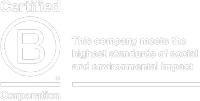Rebranding isn’t something you do very often, so it makes sense that you might underestimate what’s involved. After investing so much into building a new brand and onboarding your team, preparing well for an effective brand launch is so important.
It’s an exciting time in the brand process, which is why companies often want to hurry it along, but the most successful brand launches are well-planned and intentional.
Building a conscious brand takes significantly more mindfulness and consideration, because you need to continually align all actions with your values and think about how to meaningfully connect with your audiences’ needs, all while using positive and authentic communication.
Here are some things to consider for a successful brand rollout and launch:
Plan early in the branding process
There are lots of moving parts involved in a brand launch, so you need to start planning for this early in the branding process. Overall rebranding can take 6 to 12 months or more from beginning to launch, depending on the size of your organisation.
Set a launch day and work back from there – if you have a major event, company anniversary or something similar planned in the future it can be a great idea to align the external launch to this for greater awareness and a more effective brand shift. Just remember to give yourself plenty of time, a brand rollout is a significant undertaking that shouldn’t be rushed.
Create a checklist and timeline covering all the steps you need to take between now and your external brand launch – this could include things like asset inventory, asset migration, new website, audience communications plan, office fit-outs, event plan, new marketing collateral, production, PR and media activities, social media transition, and the list goes on!
Allocate appropriate resources
Now that you can see how much work is involved in your brand rollout, it’s important you allocate realistic resources to make it happen. Even if you’re working with an external brand agency like ours, having someone responsible for managing the rollout internally is essential, and this is often a full-time job in the months leading up to an external launch.
When in the middle of a brand rollout, it’s not unusual to be communicating with a client several times a day for a few months as we work together to keep all the balls in the air and the project plan on track. In the rollout plan there will be many actions listed that need to be done internally to support the work being done externally, so make sure you’ve planned for this, briefed your team and allocated appropriate time and resources so everything runs as smooth as possible.
Do an asset inventory and update everything
Everything that has your old brand identity or narrative needs to go. It’s always ideal to ensure everything has been updated before your launch, but sometimes due to time or budget this isn’t always possible. If that’s the case, make sure you’ve prioritised the most important assets first like your website, social media channels, physical environments and key communications and collateral. To do this, use a customer journey map to understand the customer experience and the touchpoints that best serve them along the way – you can do one of these for each of your audiences.
Even if you’re working through everything in phases, you should try and get everything swapped over as soon as possible – there’s nothing more confusing (and trust-eroding) than having inconsistent brand language and graphics in the market. This is even more important if you’ve changed your company name in the brand process. Allocate someone to do an inventory of every asset you own, both internally and externally, then prioritise these appropriately.
Prioritise your audiences
Think about who you need to communicate to and when. The order and method you use to unveil a new brand can be used to intentionally build curiosity, excitement and engagement. The worst thing you can do is unintentionally exclude or confuse people due to a simple lack of planning.
Your customers are the obvious audience, but there are many internal and external stakeholders that you’ll need to communicate to – each will require specific messaging on different channels. Your employees are always number one, and you may also need to consider other stakeholders like the community, partners, board members, suppliers, industry peers and the media.
The closer the relationship, the more thought and personalisation should go into your communications. Personal phone calls prior to launch may be required in some cases while sending out an email to other groups after launch may suffice. Ensuring you’ve been inclusive and transparent in your approach will increase the odds that your new brand is well-received, and people will talk positively about it.
Know your narrative and communication plan
Remember this isn’t just about you and your company. You don’t just want to go out with an insular narrative all about you and how your new brand will support your success. While this may be true, it means nothing to your audience and certainly doesn’t show an effort to connect them to your journey in a meaningful way. You need to find a narrative that your audience can belong to, one that is connected to something that’s bigger than the brand itself – what does this new phase mean for your customers? What are you moving towards that will mean a better outcome for people and society as a whole?
If you’ve taken the time to build a conscious brand with a meaningful purpose, you will know exactly how your values, your story and your goals for the future can bring meaningful value to your audience.
Once you have your narrative about the change in place, you’ll need to put together a communications plan that outlines how and when you will communicate to each of your audiences. While your plan will likely include different phases and channels for each audience, it’s also a good idea to create a central point online that explains your brand transformation – a page on your website or a separate mini-site might be more appropriate depending on the size of your company.
A rebrand will always spark lots of questions – make sure you prepare for this by having possible questions and answers planned out and preparing your team to respond consistently. You could also add a Q&A to your website.
Launch externally
Once your team is completely onboard with the new brand and direction, your brand assets and channels have been updated and any pre-launch communications have gone out to your key audiences, you’re ready for your external launch.
Your launch will usually coincide with making your new website live, updating your social media channels, sending out planned communications and perhaps distributing media releases.
Launching your brand publicly is often done as part of another event or can be an event in itself. You don’t always need a big fanfare – in fact that may be entirely inappropriate for your type of organisation and audience – but you do need to ensure it’s a meaningful and positive experience. Regardless of the approach you take, it needs to be led by a CEO or founder to show that the entire organisation is united behind the new direction.
A well-executed brand rollout and launch can mean the difference between a successful rebrand or a drawn-out decline in brand trust. Plan ahead, invest appropriately and remember to make it meaningful for the people who are going to help it thrive.
This article is Part Five in our series: Managing a Rebrand Rollout Effectively. Read Part 1, Part 2, Part Three, Part Four and Part Six.







